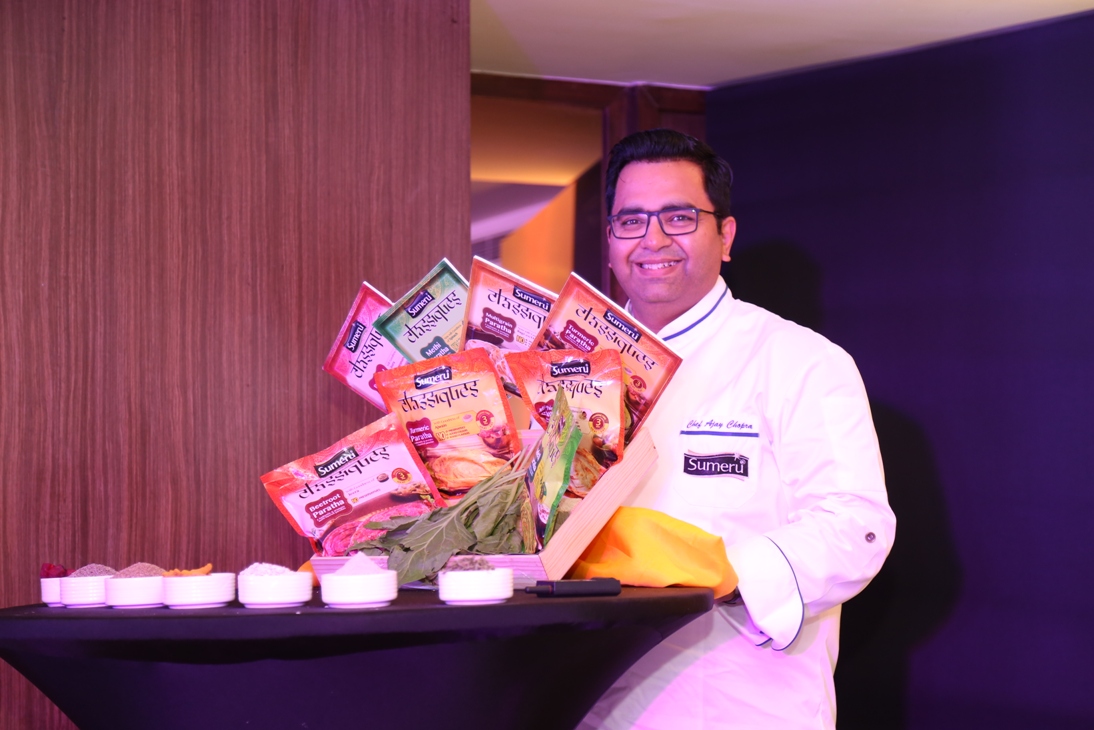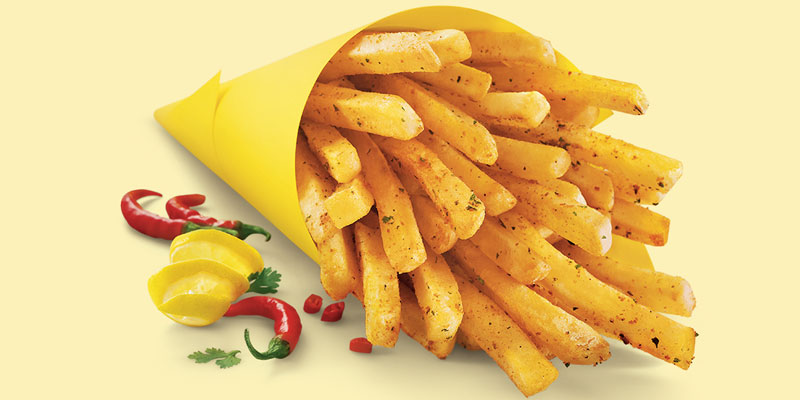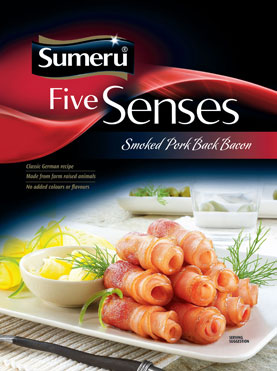

0


0

FOOD
By Admin
9 March, 2019

 Mithun Appaiah
Globally the Frozen food market is projected to reach USD 293.7 billion by the end of 2019 and in India where it was valued at USD 310 million in 2017 it is projected to grow at a CAGR of over 16% to reach USD 754 million by 2023. The demand for frozen food products has gone up in recent years particularly in a growing economy like India which has seen a rapid increase in the number of consumers with higher disposable incomes, more women entering the work forces, growing number of two-income nuclear families which has resulted in paucity of time and hence the need for convenience driven foods. Further augmented by rising urbanization, an increasing number of refrigeration facilities in small retail shops and rural households and growing cold chain industry. However, these consumers aren’t merely looking for convenience they are also looking for alternatives that are healthy, organic and preservative free along with taste, variety, and value for money – they want it all which presents both a unique challenge as well as an opportunity to the frozen food manufacturers.
Mithun Appaiah
Globally the Frozen food market is projected to reach USD 293.7 billion by the end of 2019 and in India where it was valued at USD 310 million in 2017 it is projected to grow at a CAGR of over 16% to reach USD 754 million by 2023. The demand for frozen food products has gone up in recent years particularly in a growing economy like India which has seen a rapid increase in the number of consumers with higher disposable incomes, more women entering the work forces, growing number of two-income nuclear families which has resulted in paucity of time and hence the need for convenience driven foods. Further augmented by rising urbanization, an increasing number of refrigeration facilities in small retail shops and rural households and growing cold chain industry. However, these consumers aren’t merely looking for convenience they are also looking for alternatives that are healthy, organic and preservative free along with taste, variety, and value for money – they want it all which presents both a unique challenge as well as an opportunity to the frozen food manufacturers.
 sumeru frozen foods
While frozen food is generally considered as convenient it is often perceived to be unhealthy, a consumer misconception the sector has grappled with for a while now. Often consumers assume what is available as fresh is better, but in reality, this is quite contrary. While there is no denying that fresh is good – but what is perceived to be fresh produce in the market often has reached the consumer a good 15 to 20 days after it was harvested. The days spent in transit, pollution, improper storage conditions, in fact, destroy most of the nutrition. Whereas most freezing units across the country are located with 100 kilometers of where the produce is sourced meaning the fresh peas in the Uttaranchal belt reaches the manufacturing unit within hours where it is cleaned and flash frozen at its peak nutritional state and then stored and transported in a controlled environment where the temperature is consistently maintained under -18 degree Celsius to prevent enzyme activity that might further cause nutritional loss. Freezing as a process, in fact, involves minimal processing, has a high retention of nutrients, taste, texture, and freshness making it one of the best and safest methods of food preservation without the addition of any preservatives.
The Frozen food industry is also witnessing an increase in demand for more premium, sustainable and healthier products. The today high expectation in terms of quality, taste, an origin of produce and ethic brand practices is high as well. A recent Nielsen study found that 81% of Millennials and 78% Generation Z are willing to pay more for foods with benefits. Millennials are more likely to spend on sustainable brands that offer products that are organic, high protein and follow fair trade/souring practices. To meet these needs frozen
sumeru frozen foods
While frozen food is generally considered as convenient it is often perceived to be unhealthy, a consumer misconception the sector has grappled with for a while now. Often consumers assume what is available as fresh is better, but in reality, this is quite contrary. While there is no denying that fresh is good – but what is perceived to be fresh produce in the market often has reached the consumer a good 15 to 20 days after it was harvested. The days spent in transit, pollution, improper storage conditions, in fact, destroy most of the nutrition. Whereas most freezing units across the country are located with 100 kilometers of where the produce is sourced meaning the fresh peas in the Uttaranchal belt reaches the manufacturing unit within hours where it is cleaned and flash frozen at its peak nutritional state and then stored and transported in a controlled environment where the temperature is consistently maintained under -18 degree Celsius to prevent enzyme activity that might further cause nutritional loss. Freezing as a process, in fact, involves minimal processing, has a high retention of nutrients, taste, texture, and freshness making it one of the best and safest methods of food preservation without the addition of any preservatives.
The Frozen food industry is also witnessing an increase in demand for more premium, sustainable and healthier products. The today high expectation in terms of quality, taste, an origin of produce and ethic brand practices is high as well. A recent Nielsen study found that 81% of Millennials and 78% Generation Z are willing to pay more for foods with benefits. Millennials are more likely to spend on sustainable brands that offer products that are organic, high protein and follow fair trade/souring practices. To meet these needs frozen
 Frozen pork back beons
Another major challenge that Frozen food manufacturers need to address is the growing consumer demand for variety and novelty in this segment. The consumers today are seeking more innovative products, Sumeru’s primary research data shows a marked rise in demand for mainline products like Pizza, Biriyani in the Indian frozen segment and not just snacks. Frozen desserts (non-ice-cream segment) is gaining traction and consumers have started accepting those products.
The frozen food sector overall is witnessing a lot more disruption than ever before. To address this disruption, frozen food manufacturers need to significantly invest in R&D and innovation, and develop products that address the consumer concerns around health, nutrition, and origin. At Sumeru, we uniquely combine innovation with the use of healthy ingredients like Turmeric, Millets, Methi (Fenugreek), lean meats - like Chicken and Seafood, healthier cooking methods for e.g. roasting vs deep frying to create our products. This is reflected in our newly launched range of Gourmet Premium Products created in collaboration with 13 times Michelin starred Chef, Chef Alfred Prasad (this is a first of its collaboration in the Indian Food Industry), Kebab and Paratha range - curated by Master Chef India Judge Chef Ajay Chopra. Sumeru’s products are made from healthy premium ingredients and are largely free from any preservatives and stabilizers. Also in the last year, we have built a robust system to manage our internal R&D. We have created an internal Chef’s Panel of well-known chefs who come together twice a month and go through our innovation funnel and test the products using our unique ranking system and recommend any modification. Only when our product passes this ranking system do we introduce it our next set of the panel – our consumer panel. We follow a similar rigorous tasting and testing process. Once the products that pass these two panels we then launch them in the market.
Other trends that we see emerging in the industry apart from premiumization of frozen food is that of private label brands is another factor that is boosting the growth of the market. Private-label products are relatively low-priced as compared to mainstream brands, which makes them a popular option among consumers who are budget conscious. The market share of private-label players is increasing in all the segments of the global frozen food market.
In order to succeed in the current market scenario we believe, the players in the market need to introduce new products that can tap into the potential offered by the growing demand for premium, healthy and novel frozen food products in the country.
For more interesting information on Indian food trends, download the magazine Spunky Indian. Follow us on Facebook, Instagram, and Twitter.
Frozen pork back beons
Another major challenge that Frozen food manufacturers need to address is the growing consumer demand for variety and novelty in this segment. The consumers today are seeking more innovative products, Sumeru’s primary research data shows a marked rise in demand for mainline products like Pizza, Biriyani in the Indian frozen segment and not just snacks. Frozen desserts (non-ice-cream segment) is gaining traction and consumers have started accepting those products.
The frozen food sector overall is witnessing a lot more disruption than ever before. To address this disruption, frozen food manufacturers need to significantly invest in R&D and innovation, and develop products that address the consumer concerns around health, nutrition, and origin. At Sumeru, we uniquely combine innovation with the use of healthy ingredients like Turmeric, Millets, Methi (Fenugreek), lean meats - like Chicken and Seafood, healthier cooking methods for e.g. roasting vs deep frying to create our products. This is reflected in our newly launched range of Gourmet Premium Products created in collaboration with 13 times Michelin starred Chef, Chef Alfred Prasad (this is a first of its collaboration in the Indian Food Industry), Kebab and Paratha range - curated by Master Chef India Judge Chef Ajay Chopra. Sumeru’s products are made from healthy premium ingredients and are largely free from any preservatives and stabilizers. Also in the last year, we have built a robust system to manage our internal R&D. We have created an internal Chef’s Panel of well-known chefs who come together twice a month and go through our innovation funnel and test the products using our unique ranking system and recommend any modification. Only when our product passes this ranking system do we introduce it our next set of the panel – our consumer panel. We follow a similar rigorous tasting and testing process. Once the products that pass these two panels we then launch them in the market.
Other trends that we see emerging in the industry apart from premiumization of frozen food is that of private label brands is another factor that is boosting the growth of the market. Private-label products are relatively low-priced as compared to mainstream brands, which makes them a popular option among consumers who are budget conscious. The market share of private-label players is increasing in all the segments of the global frozen food market.
In order to succeed in the current market scenario we believe, the players in the market need to introduce new products that can tap into the potential offered by the growing demand for premium, healthy and novel frozen food products in the country.
For more interesting information on Indian food trends, download the magazine Spunky Indian. Follow us on Facebook, Instagram, and Twitter.